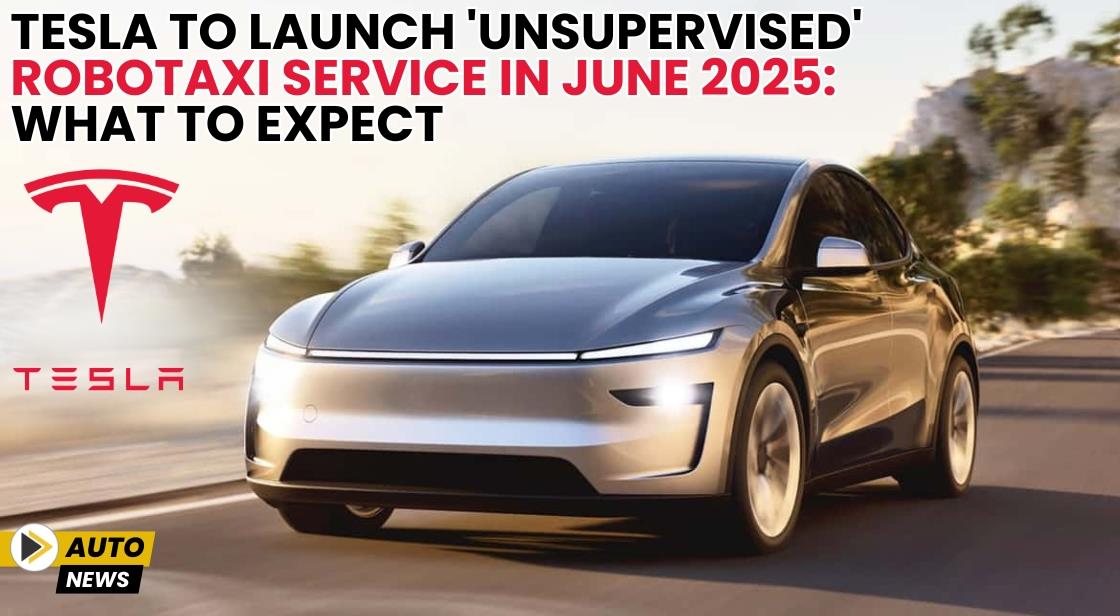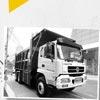Tesla to Launch 'Unsupervised' Robotaxi Service in June 2025: What to Expect

News Synopsis
Tesla is set to disrupt the autonomous vehicle industry with the launch of its "unsupervised" robotaxi service. The electric vehicle (EV) giant, led by Elon Musk, plans to roll out this service in Austin, Texas, in June 2025. This move signifies a significant leap in Tesla's Full Self-Driving (FSD) technology, accelerating beyond previous timelines for fully autonomous vehicles.
Musk Announces Tesla’s Robotaxi Initiative
During a recent earnings call, Elon Musk confirmed Tesla’s ambitious plan to introduce robotaxi services. The CEO emphasized that this is just the beginning of Tesla’s efforts to bring self-driving cars to the masses.
"We just want to put a toe in the water, make sure everything's okay, put a few more toes in the water, with safety of the general public and those in the car as a top priority," Elon Musk stated, reinforcing that safety remains the company's foremost concern.
Unlike traditional ride-hailing services where users deploy their personal vehicles, Tesla’s robotaxi fleet will be entirely company-owned. This ensures a controlled rollout and allows Tesla to fine-tune its autonomous systems before wider adoption.
Tesla’s Safety-First Approach to Self-Driving Technology
Ensuring Public and Passenger Safety
Safety is at the heart of Tesla’s unsupervised robotaxi project. While many autonomous vehicle manufacturers have faced scrutiny over potential safety concerns, Tesla aims to set new standards in the industry by ensuring rigorous testing and phased implementation.
The initial phase in Austin will act as a crucial proving ground, allowing Tesla to assess real-world performance while keeping human oversight at a minimum. Tesla’s approach aligns with regulatory expectations and addresses concerns over the feasibility of driverless cars operating on public roads.
Tesla’s AI Training Compute Surges by 400%
Advanced AI Capabilities Power Tesla’s Autonomous Fleet
Tesla has witnessed a remarkable 400% increase in AI training compute in 2024, further strengthening its self-driving capabilities. This boost allows Tesla to refine its machine learning models and enhance the accuracy of its autonomous driving systems.
Additionally, the company recently released video demonstrations of Model 3 and Model Y vehicles navigating a 1.9km route on enclosed factory roads without human intervention. These advancements suggest that Tesla is on track to introduce fully autonomous vehicles on public roads in Texas in the coming months.
Robotaxi Service Testing and Future Expansion Plans
Tesla’s Pilot Testing in California and Texas
Tesla has been testing its robotaxi service since last year, with select employees in the Bay Area participating in trial runs. These tests involved human safety drivers behind the wheel, ensuring intervention if needed.
However, Musk envisions that a fully autonomous ride-hailing service will be operational in California and Texas by 2025, pending regulatory approvals. This suggests that Tesla is gearing up for a large-scale rollout, provided it secures the necessary legal clearances.
It is important to note that Tesla does not currently have a license to operate a commercial autonomous ride-hailing service in California. The company must navigate regulatory hurdles before expanding beyond Texas.
Tesla’s Long-Term Vision for Autonomous Mobility
Cybercab and the Future of Self-Driving Cars
Beyond the initial robotaxi rollout, Elon Musk remains optimistic about launching unsupervised Full Self-Driving (FSD) in multiple U.S. states later this year. This development could transform how people commute, reducing dependency on traditional car ownership and public transport.
Furthermore, Tesla is preparing to introduce the Cybercab, a sleek autonomous vehicle unveiled last year. Production is expected to begin in 2026, marking another milestone in Tesla’s self-driving roadmap.
Conclusion: Tesla’s Robotaxi Service Signals a New Era in Mobility
With Tesla's unsupervised robotaxi service set to launch in Austin, Texas, in June 2025, the company is making significant strides in autonomous transportation. Elon Musk’s vision for self-driving cars is gradually becoming a reality, backed by major advancements in artificial intelligence and real-world testing. While regulatory challenges remain, Tesla’s phased approach to deploying company-owned robotaxis ensures greater control over safety and system reliability.
If successful, this initiative could pave the way for fully autonomous ride-hailing services worldwide, reshaping urban mobility as we know it. As Tesla continues to push technological boundaries, the upcoming launch could set new benchmarks in the self-driving industry and inspire further innovation in autonomous transport.









